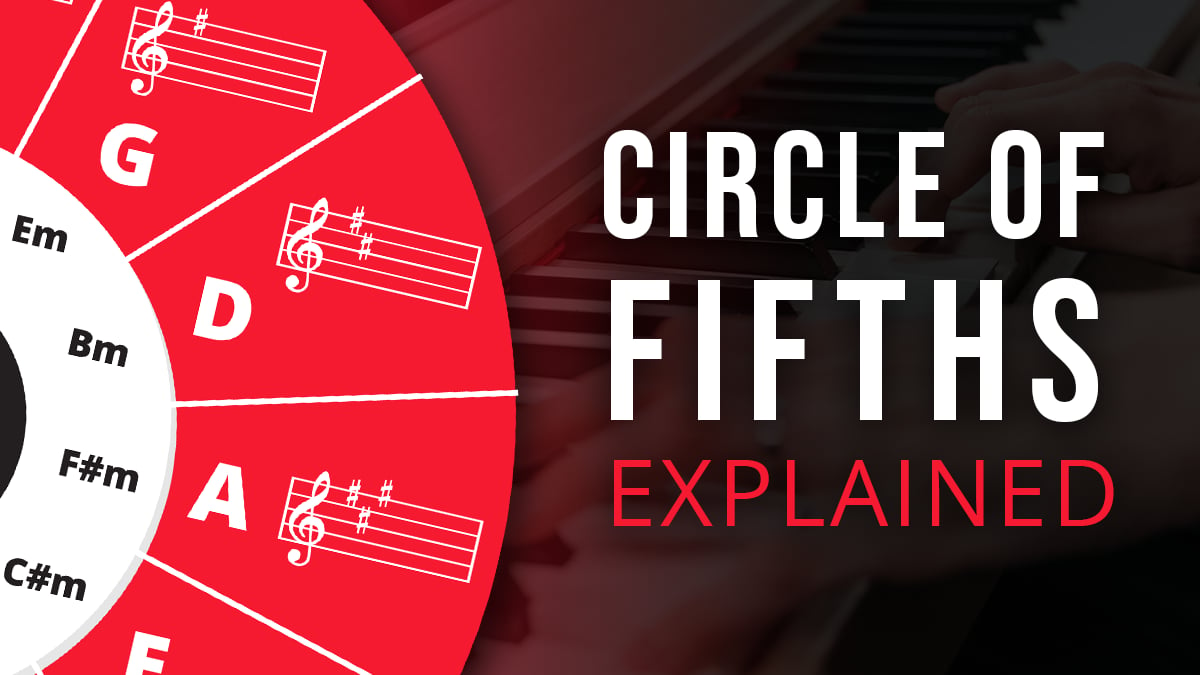
If you’re a piano player, you’ve probably heard of the Circle of Fifths.
The Circle is one of the most useful tools for musicians. But it’s also one of the most confusing. How does it work? What are you supposed to do with it?
Learning how to actually apply the Circle in a way that’s musically useful can be a bit of a puzzle.
In this lesson, we’ll teach you how the Circle of Fifths works and how to actually use it. We’ll teach you:
Click below to download this printable, letter-sized Circle of Fifths diagram and tape it up close to your piano for easy reference:
Get exclusive interviews, fascinating articles, and inspiring lessons delivered straight to your inbox. Unsubscribe at any time.
So, what is the Circle of Fifths anyway?
It’s a tool to organize and understand keys and chord progressions. If you move clockwise around the Circle, this is what happens:
The relationship between each note is a perfect fifth up. For example, moving from C to G is a perfect fifth. Moving from G to D is a perfect fifth.
Now, let’s view each note as a major key. As you move around the circle, add sharps. C Major has no sharps. Move up a fifth, G Major has one sharp. Move up another fifth, D Major has two sharps.
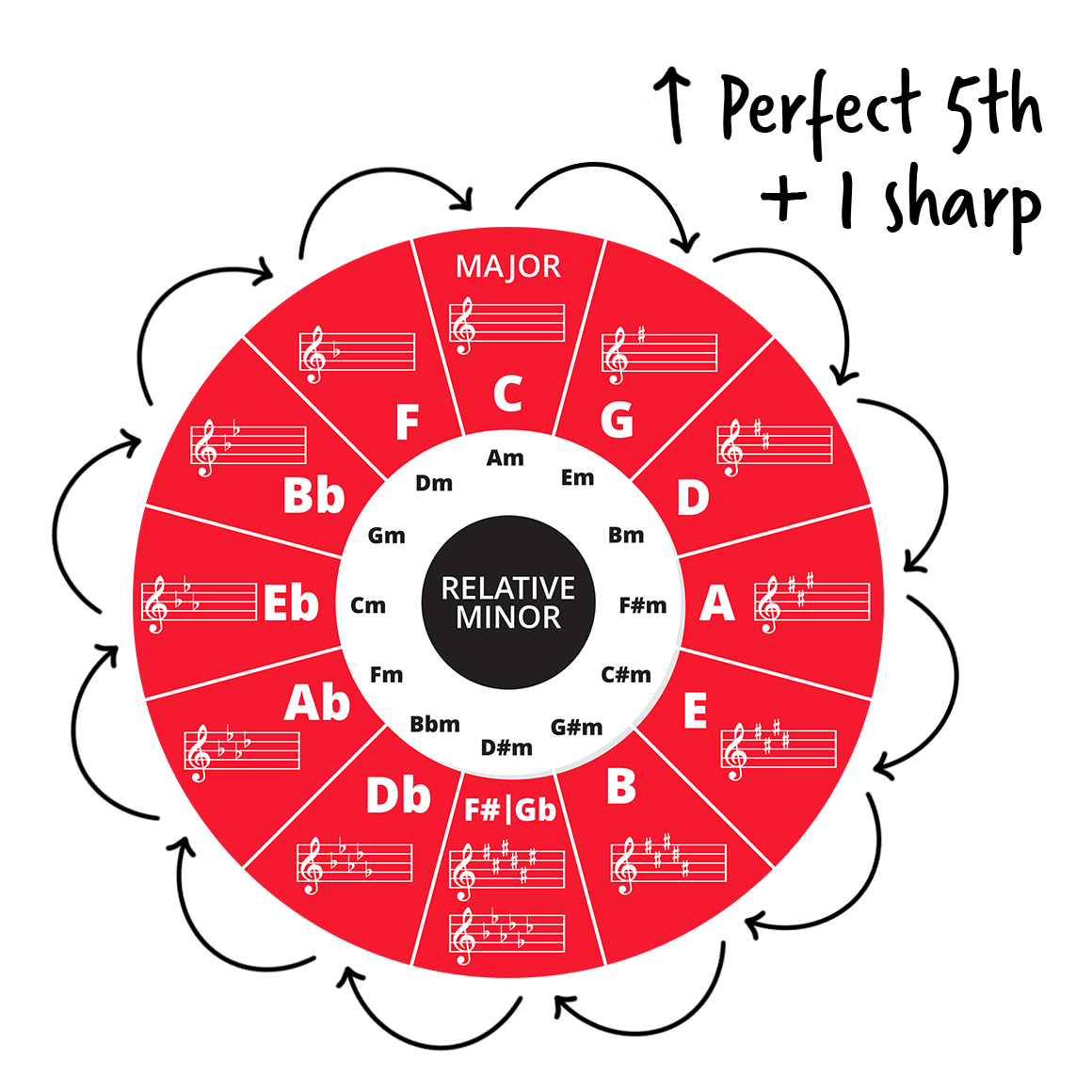
How about the other direction? If we move counter-clockwise…
The relationship between each note is a perfect fifth down. A perfect fifth down from C is F and a perfect fifth down from F is B-flat.
Viewing each note as a major key, add flats as you move around the circle. C Major has no flats, but move down a perfect fifth, and F Major has one flat. Move another perfect fifth down: B-Flat Major has two flats.
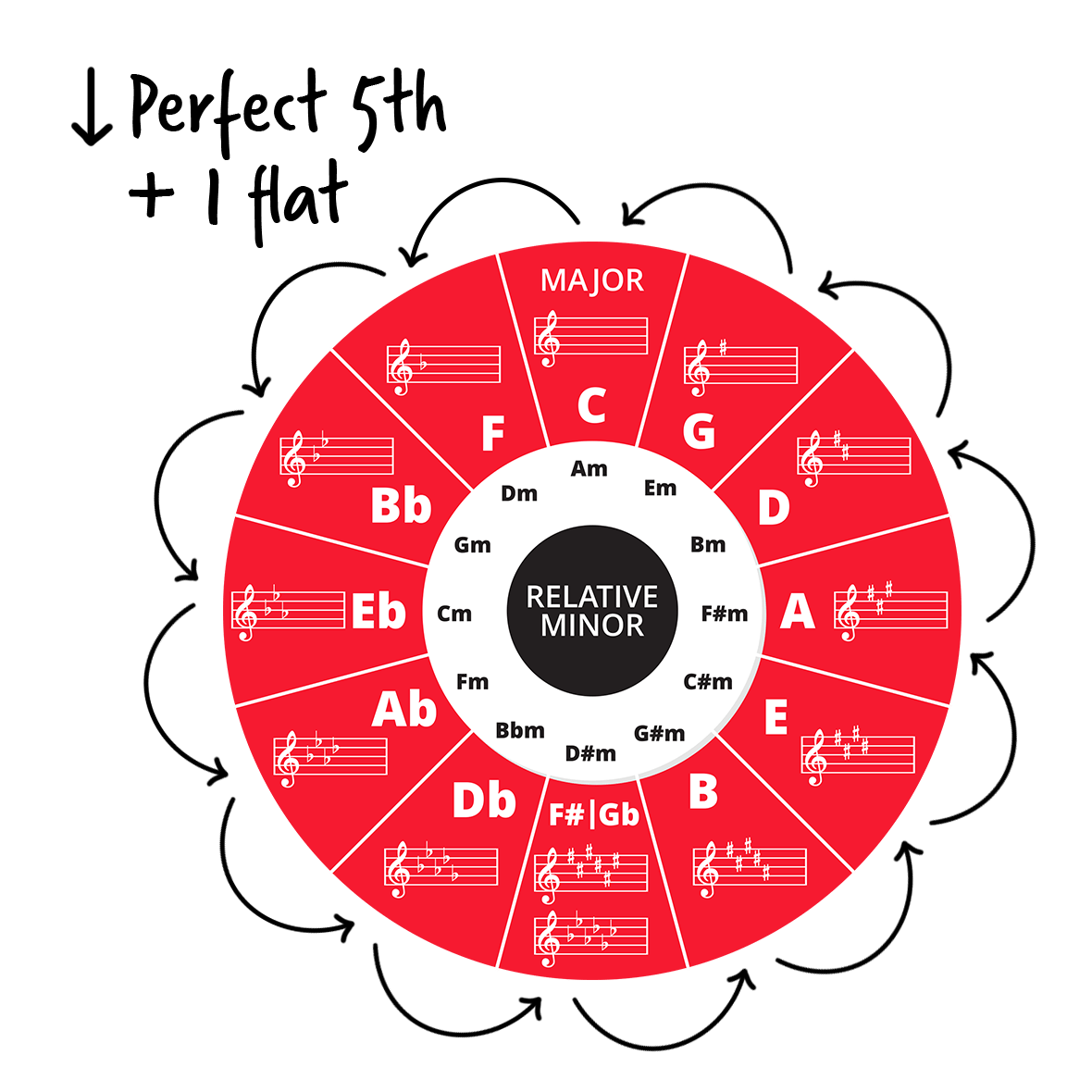
But when you’re given a random key, how can you know when to walk clockwise and when to walk counter-clockwise? Answer: find the closest route to your key from C. So, if you’re working with D Major, go clockwise.
🎹 WHAT’S A PERFECT FIFTH? If you’re new to musical intervals, check out this lesson. Knowing and understanding intervals will help you train your ear and read sheet music faster. For now, you can think of perfect fifths as two notes seven semitones or half-steps apart.But how do you know which sharps and flats you’re working with in a given key signature? Here’s a handy mnemonic:
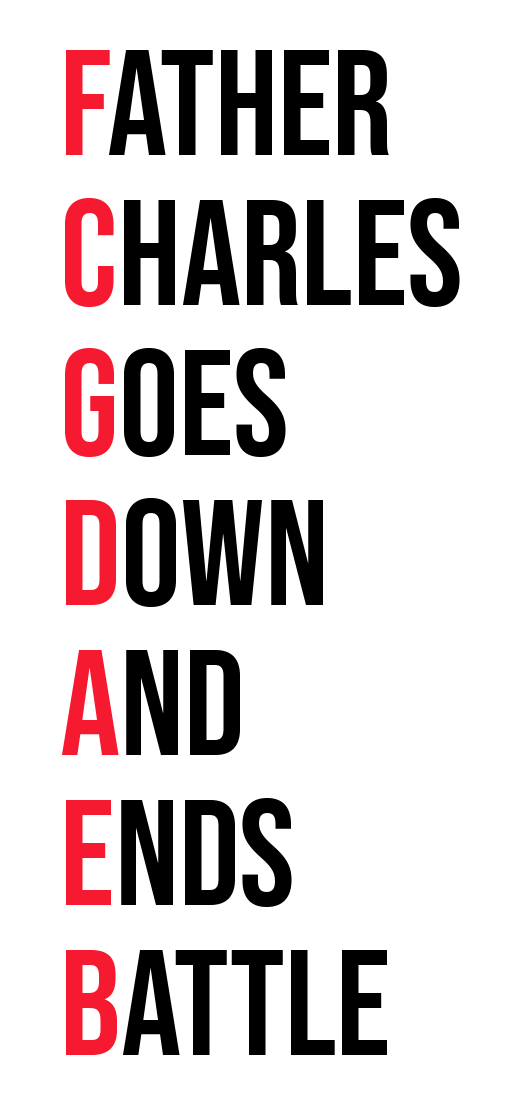
Flip this mnemonic around, and you get the order of flats.

Neat, huh? You may have noticed that, again, we’re moving in perfect fifths around the circle!
Let’s try an example.
Pop quiz! How many sharps or flats are in B Major?
It’s faster to get to B from C on the circle if we go clockwise, and it takes five steps. Therefore, B Major has five sharps.
The first five words of our mnemonic is “Father Charles Goes Down And.” Therefore, B Major’s five sharps are F#, C#, G#, D#, and A#.
🎹 F# OR G♭? You may have noticed that F# and G♭ belong in the same tile on the Circle. This is because they’re the same note and are, essentially, the same thing. This is called enharmonic equivalents.But how about the inner circle? This is where we house our relative minor keys.
Every major key has a relative minor key. Relative minors have the same key signature as their major key sibling (they’re relatives!). The only difference is you start and end your scale on a different note. This note is three half-steps down from the starting note of the relative major key.
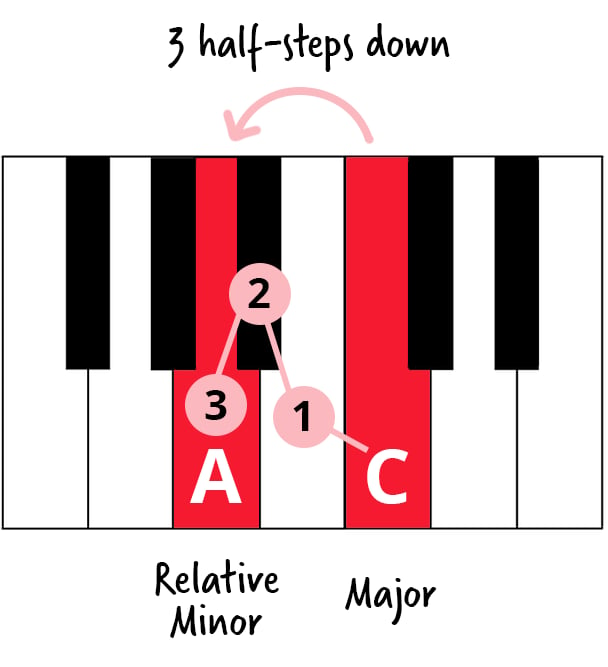
For example, C Major has no sharps or flats. Three half-steps down from C is A. Therefore, the relative minor key of C Major is A Minor, and A Minor also doesn’t have any sharps or flats.
The Circle of Fifths isn’t just for figuring out key signatures. You can use it to help you understand and create chord progressions on the piano. When we use the Circle like this, we imagine each note around the circle as a chord.
🎹 CHORDS ARE ESSENTIAL: If you’re new to chords, be sure to check out How to Play Piano Chords. Or, better yet, take our free Chord Hacks course to get a complete and practical overview. Chords are the foundation to all Western music, so it’s definitely worth spending time on them!Let’s take a very simple chord progression as an example: the V-I. In C Major, C is our I chord and G is our V chord. These chords are like best buddies—they’re right next to each other on the Circle.
V-I Progressions:
C Major: G → C
F Major: C → F
B-Flat Major: F → B♭
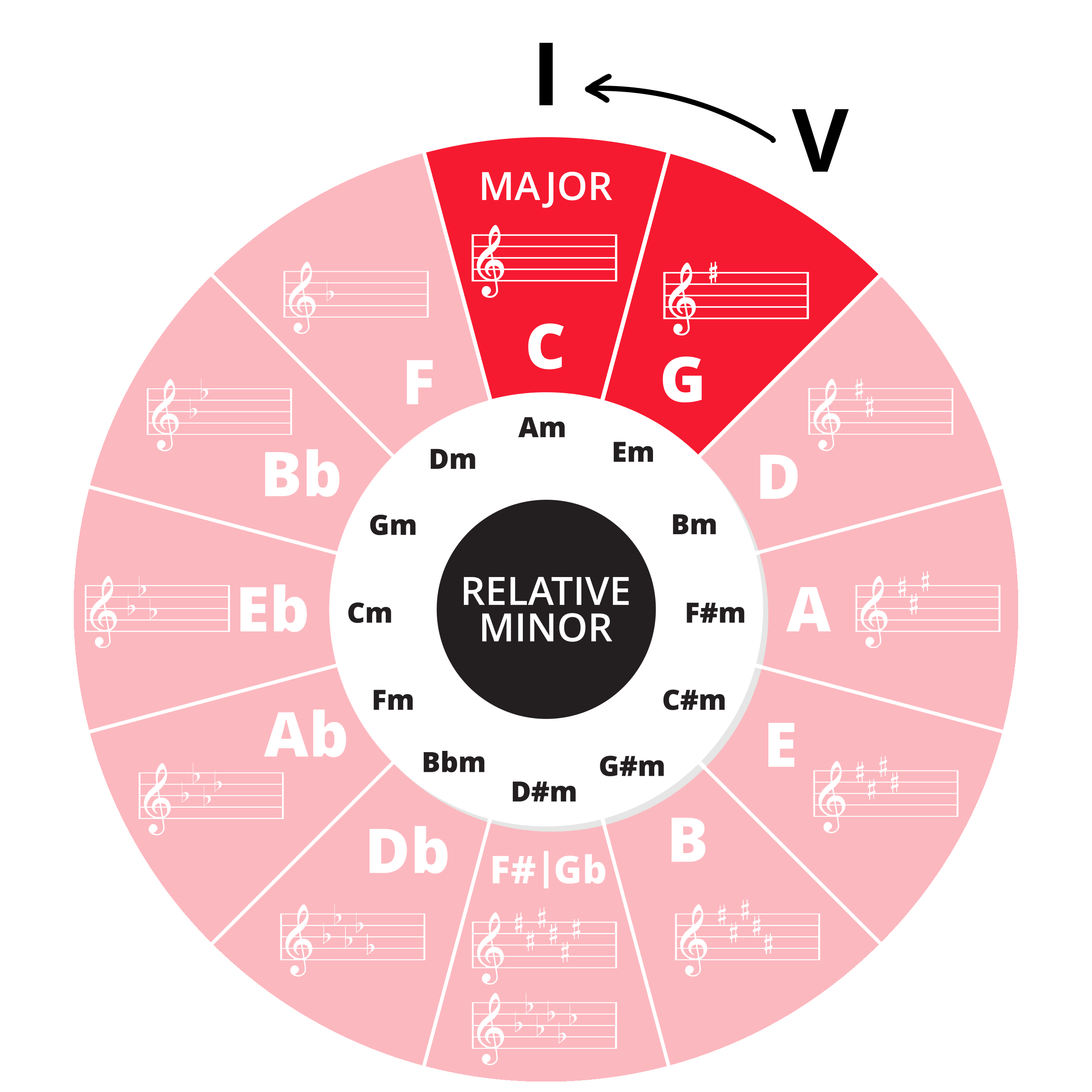
Continuing counter-clockwise around the Circle, you’re essentially doing V-I progressions in different keys.
🎹 WHAT’S WITH THE ROMAN NUMERALS? The Roman numerals tell us on which note of the diatonic scale a chord is built on. Capital letters mean the chord is major. Lowercase letters mean the chord is minor. You can learn more about chord symbols in our lesson on the number system and our lesson on diatonic chords.The Circle can be especially useful for jazz musicians because the ii7-V7-I7(a key progression in jazz) is mapped right onto the circle!
ii7-V7– I7 Progressions
C Major: Dm7 – G7 – Cmaj7
D Major: Em7 – A7 – Dmaj7
A Major: Bm7 – E7 – Amaj7
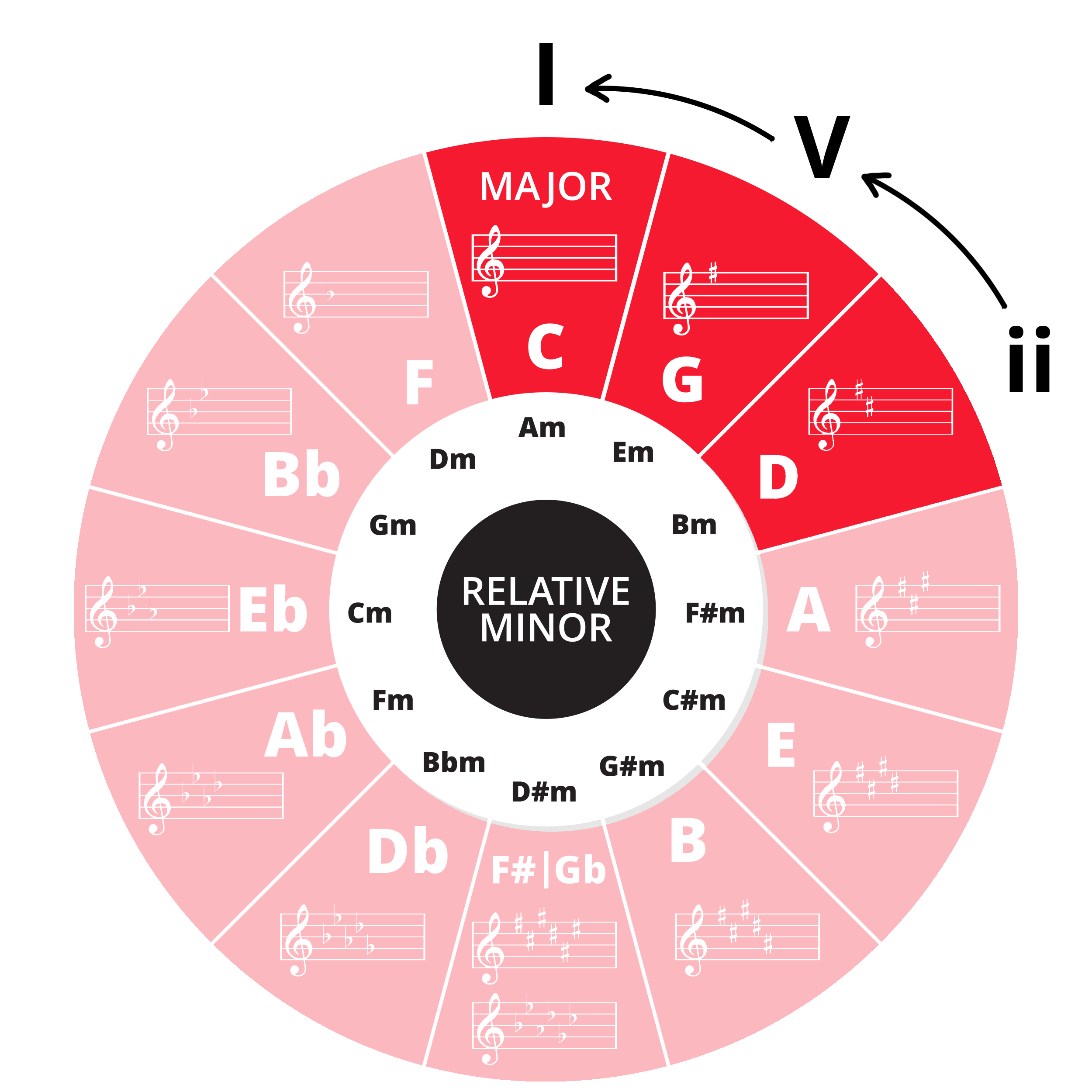
Another popular progression is the I-IV-V. In C Major, these chords are C, F, and G, respectively. And as you can see, all three chords are right next to each other on the Circle. So they’re closely related.
Another good chord to learn on the Circle is the vi. The vi chord of a major scale is always a minor chord. Using a minor chord in your progressions adds extra flavor.
You may notice that the vi chord is also the relative minor of whichever key you’re in.
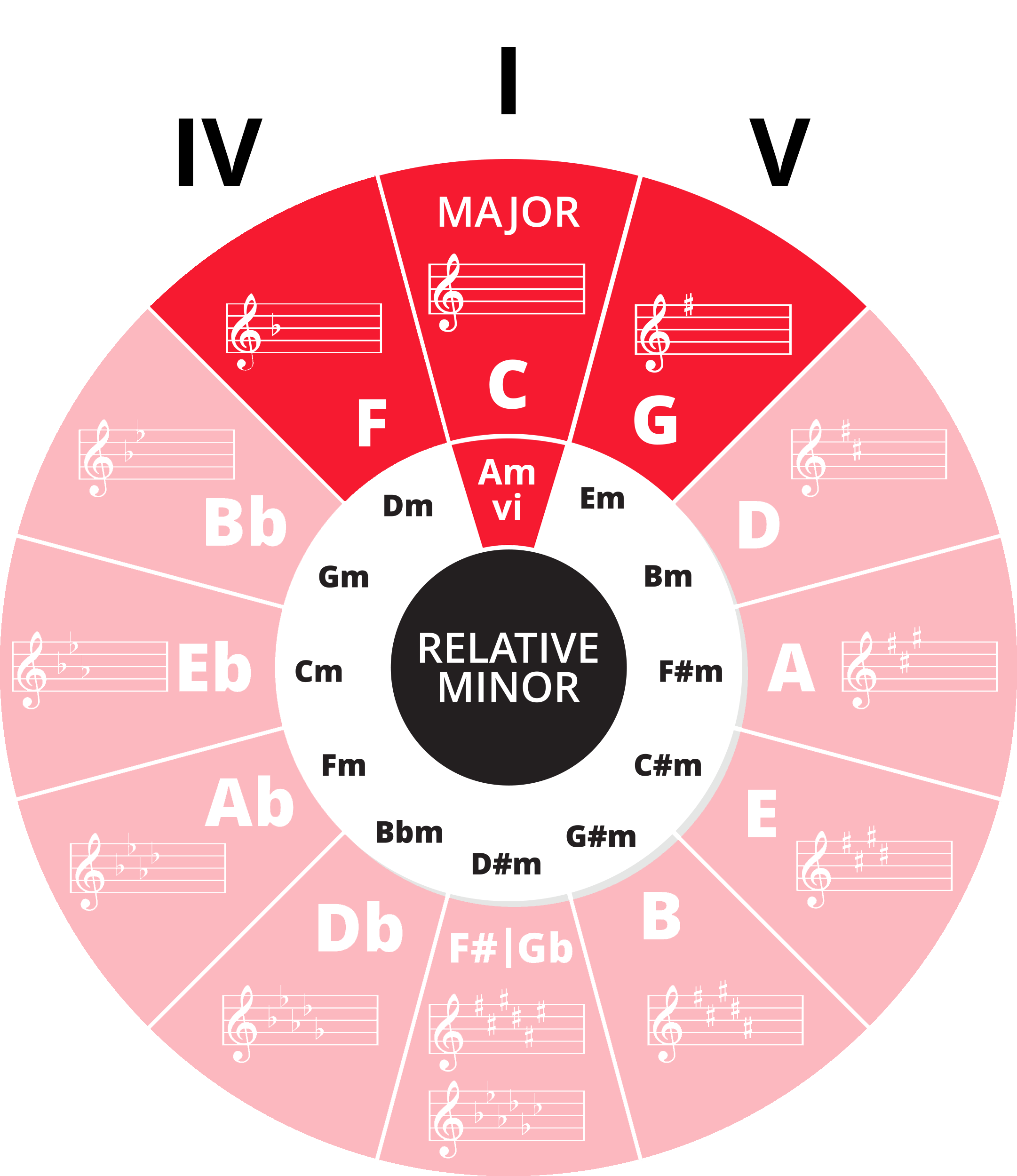
You can really nerd out on the Circle of Fifths and find hidden chord progression gems in it. Or use it as a way to understand and appreciate the progressions in your favorite music.
Classical music lovers may want to visit the Circle of Fifths Progression. This is when you go around the entire Circle in the same key using only diatonic chords. This nifty progression makes an appearance in classics like Bach’s Brandenburg Concerto No. 2 and Mozart’s Sonata in C (K. 545).
By now, you may have picked up that to create smooth chord progressions, move to chords that are close to you. But what happens if we leap around? This is what John Coltrane’s aptly named “Giant Steps” does.
Vox does a good explanation of these chord changes using the Circle of Fifths in this video. And if you want to learn more about the theory behind jazz progressions, JazzAdvice.com has some insightful explanations and tips.
We hope you found this Circle of Fifths for piano explainer helpful! If you want a comprehensive and accessible deep dive into all things piano, consider becoming a Pianote Member. You’ll gain instant access to the Pianote Method, learn from world-class pianists, and get transcriptions and tutorials to hundreds of songs.
Learn how to play piano whenever you want, wherever you want, and whatever you want.
TRY PIANOTE FOR 7 DAYSCharmaine Li is a Vancouver writer who has played piano for over 20 years. She holds an Associate diploma (ARCT) from the Royal Conservatory of Music and loves writing about the ways in which music—and music learning—affects the human experience. Charmaine manages The Note. Learn more about Charmaine here.


By signing up you’ll also receive our ongoing free lessons and special offers. Don’t worry, we value your privacy and you can unsubscribe at any time.
We use cookies for traffic data and advertising. Cookie Policy »